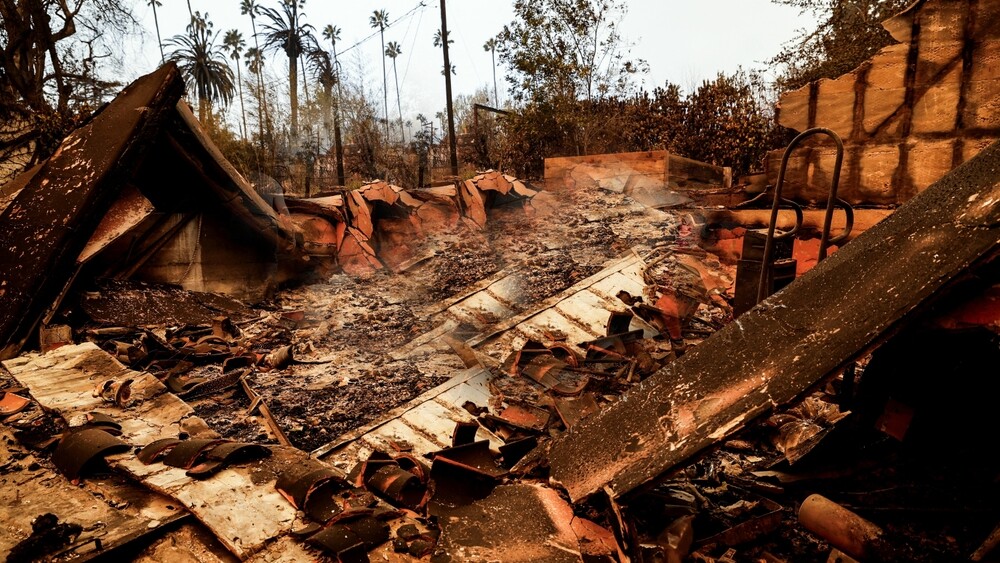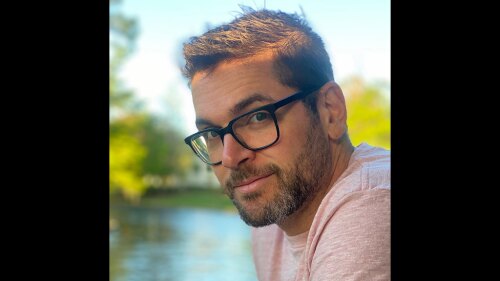Reconstruction after January’s wildfires in Los Angeles County has begun in earnest, but many residents still don’t know whether rebuilding on their lots is safe.
The Federal Emergency Management Agency (FEMA) and the U.S. Army Corps of Engineers, responsible for the first two phases of debris cleanup, respectively, declined to test soil in the areas devastated by the Eaton and Palisades wildfires.
This decision—unusual in the history of the region’s fires—has left people without assurance that their land is free of such chemicals as asbestos, exposure to which can cause a plethora of cancers, or lead, which can damage the brain, especially in children.
Structure fires release into the environment a cocktail of toxic substances that were previously encapsulated in paint or insulation, among other materials. The resulting “ash footprint” can contain chemicals that are “not good to breathe or to have around”—such as carcinogenic arsenic, polycyclic aromatic hydrocarbons (PAHs), and dioxins, says Preston Brooks, a partner in the environmental practice at the law firm Cox, Castle & Nicholson.
“You can’t always see or smell toxic chemicals—that’s why you do [soil] sampling to make sure,” Brooks says.
Unconfirmed toxicity
Although soil sampling efforts self-funded by the L.A. County Department of Public Health and research institutions have filled in some gaps—USC is testing residents’ soil samples for lead, and researchers from UCLA, Loyola Marymount, and Purdue universities are offering full-panel soil testing—none of these groups have tested the soil on a parcel-by-parcel basis.
That lot-by-lot testing is required to determine whether individual parcels are safe to reoccupy, says Brooks, who led the debris management section of Project Recovery, a report developed by ULI Los Angeles, UCLA, and USC that provides actionable recommendations to expedite recovery.
Residents who want to rebuild or reoccupy their houses have reason for concern—but they also face confusion. Victims of the Eaton fire in Altadena may know, for example, that 80 percent of preliminary soil samples in their area tested positive for lead at levels that exceed state health standards. But is their lot in the 80 percent or the 20 percent? It’s hard to know without hiring a soil testing company yourself, which comes with a steep price tag not always covered by insurance.
“I suspect most individuals . . . won’t be comfortable with generalities,” Brooks says. “People have different levels of insurance, and they want to understand from their insurance carriers whether debris removal is covered under their policies.”
Adding to residents’ plight: What the Corps of Engineers removes from each site is far from predictable. Brooks says that the Corps has leveled some sites completely, whereas on others, “they’ve left behind the driveway, tree roots, retaining walls, and pool structures,” which are now “essentially at a different elevation.” He adds, “It’s really tough, by the way, for residents to try to figure this all out on their own.”
Things are even more confounding downwind of the Pacific Palisades fire zone, where samples indicated less widespread contamination but showed isolated hot spots of heavy metals, including arsenic.
“I think it would be a real miss on the part of federal, state, and local authorities to leave [comprehensive testing] up to each individual property owner,” Brooks says. “This is an instance where government is best suited to provide what I’ll call a clean bill of health.”
Left in the lurch
FEMA and the Corps of Engineers’ decision represents a break with tradition. For nearly two decades, federal agencies funded and conducted comprehensive parcel-by-parcel soil testing (often called “confirmation” testing) after L.A. wildfires. Typically, the Corps would first scrape six inches of topsoil off each property and then test the newly exposed soil for a slew of different toxic chemicals. If those tests revealed contamination, federal crews would scrape further and retest.
“That’s really the only tried-and-true methodology,” Brooks says.
The 2018 Camp Fire in Paradise, a town in northern California, showed just how essential testing and rescraping can be. A third of the 12,500 properties authorities sampled there were dangerously contaminated—even after removal of the first six inches of topsoil. In fact, federal crews returned to each site as many as five times to remove more soil before the lots were deemed safe.
Despite pushback—including from a contingent led by U.S. Representative Laura Friedman (D-CA 30), among others—the agencies now maintain that the Corps of Engineers’ removal of six inches of topsoil, to level the ground to a rough, approximate grade, is sufficient.
Experts disagree. Project Recovery’s authors recommend the collection of soil samples—regardless of whether the lots are scraped—as well as analytical tests for lead and other contaminants at each of the 13,500 properties the Eaton and Palisades wildfires damaged or destroyed. According to Brooks, these steps are so important because of the heavy rainfall in L.A. since the fires. Rain tends to drive toxic chemicals “now in liquid form” deeper into the soil, Brooks says.
In response to these concerns, the L.A. County Board of Supervisors approved a motion on April 15, 2025, to reallocate $3 million from the county’s Lead Paint Hazard Mitigation Program to help residents in the Eaton Fire zone, or up to one mile downwind of it, cover the costs of lead testing. There isn’t a similar refund that covers testing for other chemicals, or for those conducted in the Palisades fire region.
“The findings shared by the Department of Public Health are concerning for our residents who live near the Eaton Fire burn area and are now facing the possibility of soil contamination,” said Board Chair Kathryn Barger—who introduced the motion—in a statement. “I’m aware [that] some of my constituents want to test their soil but are worried about the cost. This motion is about making sure they have access to resources and support to protect their health and their homes.”
This article is part of a series examining topics in the Project Recovery report. Join us next Friday for a new installment.
Related reading:
● Holding on to Altadena: Rebuilding to Preserve Housing Wealth
● January 2025 Economist Snapshot: Los Angeles Wildfires Recovery Will Be Costly and Lengthy








